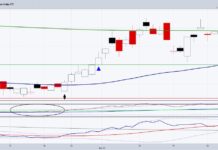This title is so true and an essential concept for traders to understand when assessing markets trends more broadly.
Capital truly has no borders. It flows freely like the sea and sometimes it comes in gently like the tide, raising all boats. Sometimes it crashes on a nation’s shore like a tidal wave.
Capital that comes in like a tidal wave creates asset bubbles that eventually pop, a prime example being 2008.
18th Century economist Richard Cantillon observed that excess foreign capital that is hoarded eventually leads to bubbles.
In 2008, this observation took life when excess foreign investments from the emerging economies in prior years fed the housing boom and bust.
The following years, as the financial crisis spread throughout the developed economies, capital was absorbed again by the emerging economies, and Asian markets like the Philippines soared.
Then in 2015, the Hang Seng crashed. Asia had been absorbing the crisis in the developed markets, but now the Hang Seng took on its own deep dive. So where did the capital go? A lot of it ended up in back developed economies like US Treasuries. The developed economies were now absorbing China’s crisis. And if you recall from that period, the money markets worried about the risk to US banks as interest rates fell to levels that could lead to tightening in lending and therefore a tightening in the economy. However, by early 2016, the Hang Seng stabilized and US equities resumed their uptrend.
In 2020, the global pandemic created a new crisis and we saw both equities and US Treasuries break new highs as global capital flowed to the safety of the US. Recall that bonds and equities decoupled in the summer of 2012. Prior to that, they had moved lock-step since the early 80’s as inflation was slowly drawn down from the system. The peak of the European Crisis and negative interest rates broke that relationship until 2020, when both equities and the bond markets in the US absorbed the current global crisis.
What can we expect in 2021? Where will that capital flow once economies return to a post pandemic world? That’s the question we need to be asking even as markets continue to rise.
For further reading:
Cantillon, Richard, Essai sur la Nature du Commerce in Général (Essay on the Nature of Trade in General). Henry Higgs, ed. and trans. 1959. Library of Economics and Liberty. https://www.econlib.org/library/NPDBooks/Cantillon/cntNT.html
King, Stephen, (August 19, 2015). Why China’s role as the world’s shock absorber is changing. Financial Times.
Twitter: @rinehartmaria
The author may have positions in mentioned securities at the time of publication. Any opinions expressed herein are solely those of the author, and do not in any way represent the views or opinions of any other person or entity.








